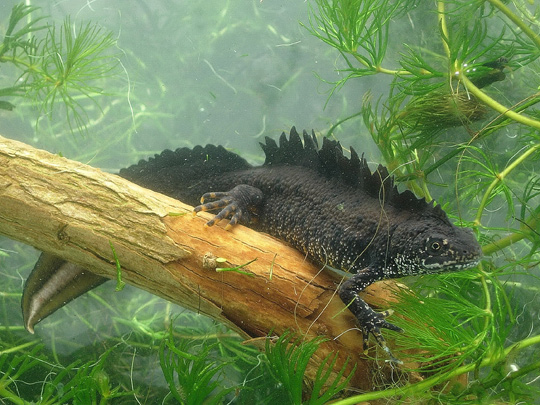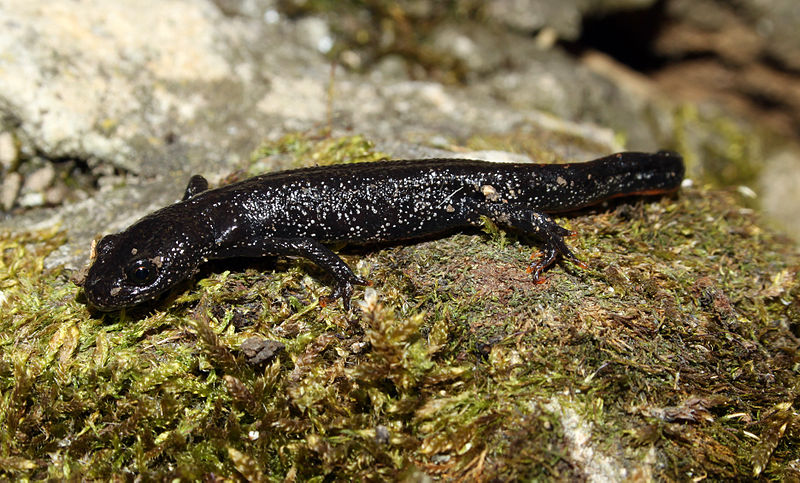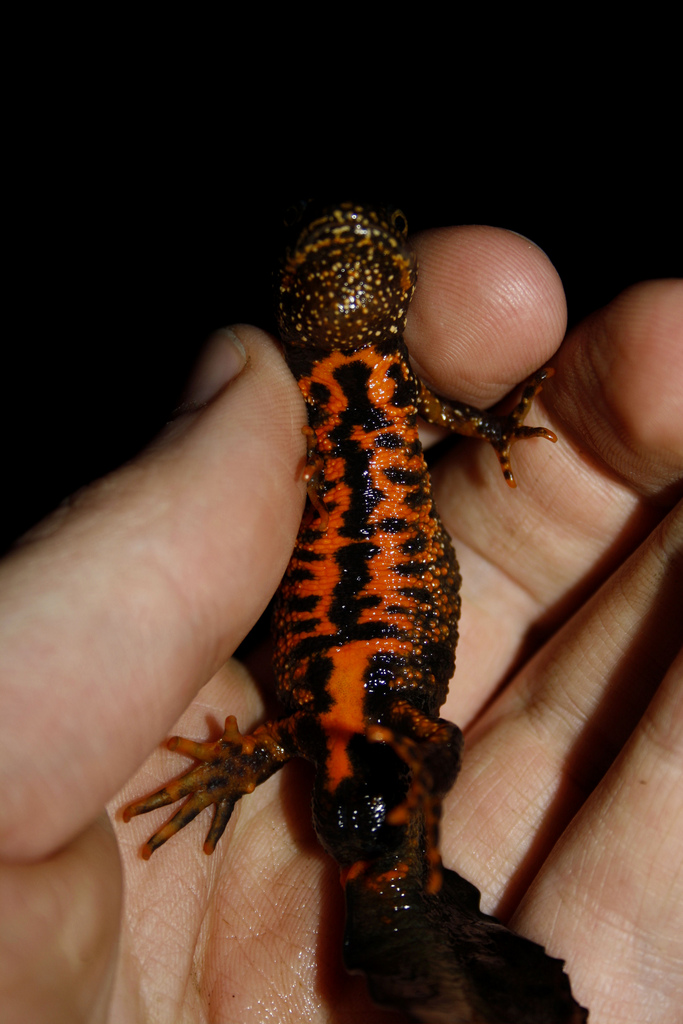Biodiversity
Related Links
Latest News
A Starring Role for Nantclwyd’s Lesser Horseshoe Bats
22.05.2015
Living Landscape Brought Back to Life
05.12.2014
Facebook Page
Great crested newt
The great crested newt is the largest, and rarest, of three newt species in Britain. They are strictly protected by law because of population declines in recent years.
 Description and identification: Great crested newts grow up to 15cm in length and have a heavier build than the other two species of newt - smooth and palmate. Their skin has a warty appearance and is mainly dark brown or black, however the belly is bright orange with dark blotches. The males have a large crest along their back and tail during the breeding season.
Description and identification: Great crested newts grow up to 15cm in length and have a heavier build than the other two species of newt - smooth and palmate. Their skin has a warty appearance and is mainly dark brown or black, however the belly is bright orange with dark blotches. The males have a large crest along their back and tail during the breeding season.
Habitat: As amphibians, great crested newts require freshwater for breeding. In the breeding season they inhabit still water, preferring large well-vegetated ponds without fish. They have been known to breed in more unusual places like concrete water tanks and disused swimming pools, as well as flooded quarries and industrial sites. Outside of the breeding season the newts move to terrestrial habitat which includes rough grassland and woodland in the vicinity of the breeding ponds.

Diet: Great crested newts feed on invertebrates, like insects and worms, either on land or in water depending on the time of year. They also take tadpoles, young froglets and other newts. Newt larvae (newly hatched young) feed on small aquatic organisms.
Ecology and reproduction: Breeding occurs during spring, when male and female newts come together at ponds to mate. The male performs a courtship display to attract a female. After mating, the female lays eggs individually on submerged leaves, which she folds over characteristically to protect the egg. The larvae emerge from the pond between late August and mid-October, and spend two to three years maturing on land. The species is quite long-lived, with some individuals reaching their teens. Most great crested newts do not travel more than about 250m from their breeding pond in their lifetime.

Distribution: Great crested newts are distributed across northern and central Europe and western Russia. In the UK they are found in England, Scotland and Wales. North East Wales supports some important great crested newt populations. In Denbighshire the species is scattered around the county, with populations around Trefnant, St Asaph, Bodelwyddan, Rhuddlan, Rhyl and in the Clwydian Range around Maeshafn.
Threats: The main threat facing great crested newts in the UK is loss of habitat – both breeding and terrestrial. Many ponds in the wider countryside have been lost, either through neglect or intentional filling in. Changes in agricultural practice have degraded terrestrial habitat, and ponds are at risk from pollution. Stocking fish in ponds is also a problem as the newt larvae are vulnerable to fish predation. Since many great crested newts are found in close proximity to human settlements, urban development has impacted on the newts’ habitat.
Status: This species is protected under UK and European law and is a priority for conservation at a UK, Wales and Denbighshire level.



